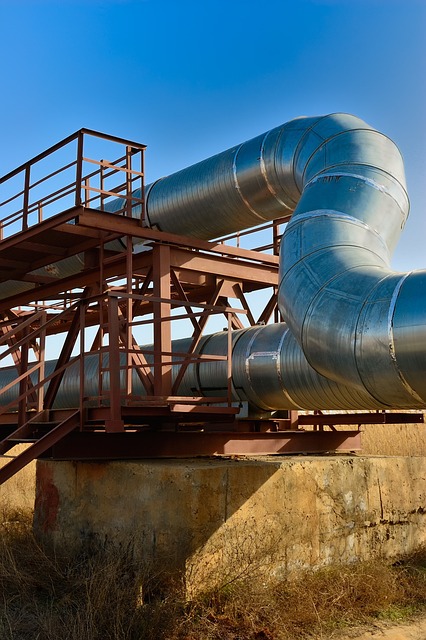Metal degradation is a persistent challenge across various industries, inflicting substantial economic losses and presenting safety hazards. Corrosion, the primary culprit behind metal deterioration, can compromise the integrity of structures, pipelines, and equipment. However, advancements in corrosion prevention methods, particularly cathodic protection (CP), have emerged as a vital solution to extend metal longevity and maintain the reliability of critical infrastructure. In this article, we will explore the fundamentals of cathodic protection, its applications, mechanisms, and the secrets it holds for ensuring the durability of metals.
Understanding Cathodic Protection
Cathodic protection is an electrochemical process used to control corrosion on metallic structures by converting them into a cathode of an electrochemical cell. It is particularly effective for structures exposed to corrosive environments, such as underground pipelines, offshore platforms, storage tanks, and marine vessels. The core principle behind CP is shifting the electrochemical reactions that cause corrosion.
There are two main types of cathodic protection: impressed current cathodic protection (ICCP) and sacrificial anode cathodic protection.
- Impressed Current Cathodic Protection (ICCP): This approach involves an external power source that supplies a direct current to the metal structure, driving cathodic reactions and significantly reducing corrosion rates. ICCP systems typically use inert anodes made from materials like titanium or graphite.
- Sacrificial Anode Cathodic Protection: In this method, more reactive metals, known as sacrificial anodes (usually magnesium, zinc, or aluminum), are attached to the structure. These anodes corrode preferentially, thereby protecting the underlying metal from degradation. This system relies on the natural electrochemical properties of the anode material and does not require an external power source.
How Cathodic Protection Works
To understand how cathodic protection effectively combats metal degradation, it’s essential to delve into electrochemical reactions. Corrosion occurs when anodic areas on a metal surface lose electrons and become oxidized. In contrast, cathodic areas gain electrons, promoting reduction reactions. By attaching an external anode or imposing a current, cathodic protection takes advantage of these electrochemical principles to inhibit the anodic reaction.
When the protective current flows to the metal structure, it elevates the electrical potential of the surface, effectively reducing the susceptibility to corrosion. In sacrificial anode systems, when the anode corrodes, it releases electrons that flow to the cathodic metal, maintaining its protective state.
Applications of Cathodic Protection
Cathodic protection is applied across various industries:
- Pipeline Protection: Underground pipelines transporting oil, gas, or water are vulnerable to corrosion. CP ensures their integrity and extends service life.
- Marine Structures: Ships, offshore platforms, and floating drilling rigs face severe marine corrosion. CP provides an essential layer of protection against sea water’s corrosive effects.
- Storage Tanks: Tanks storing hazardous materials require effective corrosion control to prevent leaks and environmental contamination.
- Reinforced Concrete: CP can also be applied to reinforced concrete structures, protecting embedded rebar from corrosion due to moisture and chloride ingress.
Benefits of Cathodic Protection
The advantages of cathodic protection are manifold:
- Extended Asset Life: By significantly reducing corrosion rates, CP increases the lifespan of metal structures and equipment, leading to cost savings in maintenance and replacement.
- Improved Safety: Preventing catastrophic failures due to corrosion enhances safety for both workers and the environment.
- Regulatory Compliance: Many industries are subject to strict regulations regarding corrosion management. Implementing CP helps companies meet these standards.
- Cost-Effective Solution: While initial installation may involve upfront costs, the long-term savings from reduced maintenance and extended asset life make CP a financially sound choice.
Challenges and Considerations
While cathodic protection is highly effective, it’s essential to consider certain challenges:
- Design and Monitoring: Proper design and regular monitoring of CP systems are critical for ensuring effective corrosion protection. Inadequate systems may fail to provide the desired protection, leading to continued degradation.
- Interference with Nearby Structures: CP systems must be carefully managed to avoid interference with adjacent structures, which could inadvertently accelerate corrosion in those assets.
- Material Selection: The choice of anode materials and system configuration plays a crucial role in the effectiveness and longevity of the protection system.
Conclusion
Cathodic protection is a proven solution for safeguarding metal structures from the relentless forces of corrosion. By understanding the underlying principles, applications, and benefits of CP, industries can unlock the secrets to metal longevity and ensure the reliability and safety of their operations. As technology continues to advance, the potential applications and efficiencies of cathodic protection will expand, solidifying its role as a cornerstone of corrosion management in the future. In embracing cathodic protection, industries not only protect their assets but also contribute to sustainability by minimizing waste associated with metal degradation.

